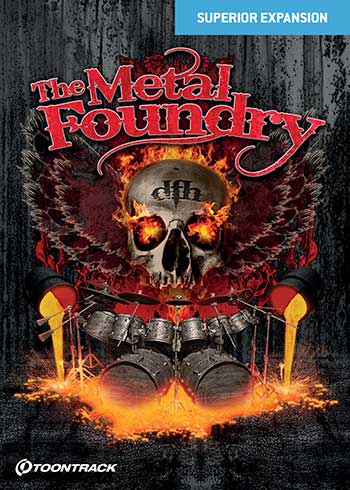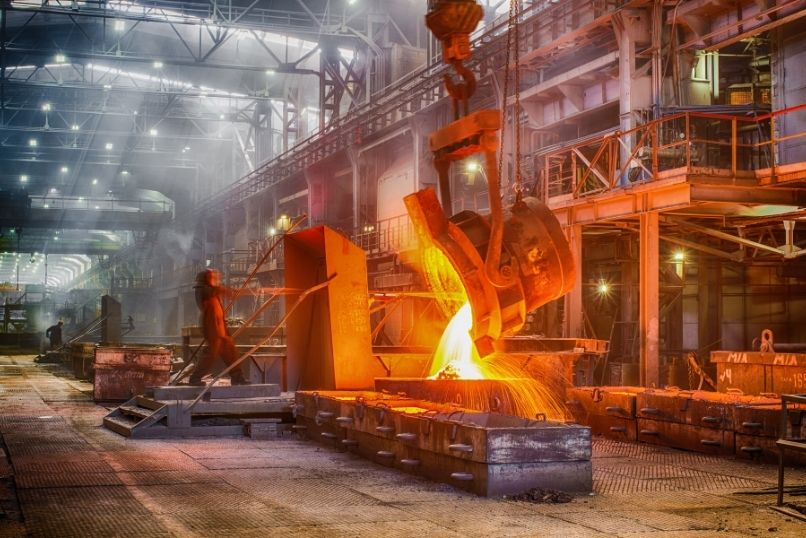Everything About Metal Casting: Just How Foundries Deliver High Quality and Precision in Manufacturing
Metal casting stands as a foundational process in production, where raw metals are transformed into details parts. Foundries employ numerous casting approaches to accomplish preferred features and forms. Each method features its own set of restrictions and benefits. Understanding these subtleties is important for valuing exactly how top quality and precision are maintained throughout the procedure. The conversation in advance will certainly explore the complex dynamics of metal casting and its relevance across numerous markets.
The Fundamentals of Metal Casting
Metal casting is an essential procedure in manufacturing that involves shaping molten metal right into wanted kinds. This crucial strategy begins with the option of raw products, often numerous metal alloys, which are melted in a furnace. As soon as the metal reaches the ideal temperature, it becomes all set and liquid for casting.
The process requires a mold and mildew, commonly made from sand, metal, or ceramic, which defines the final form of the cast things. Once the molten metal is put right into the mold, it strengthens and cools, handling the mold and mildew's shapes.
After cooling down, the casting is removed from the mold and mildew, and any kind of needed completing procedures, such as brightening or cutting, are performed. This approach allows producers to generate complicated forms and parts with high precision and marginal waste. Metal casting is widely made use of across various sectors, from vehicle to aerospace, emphasizing its importance in contemporary production.
Types of Casting Methods
While various casting techniques exist, each technique supplies unique advantages and is suited for various applications. Sand casting, among the most usual techniques, uses sand as the mold product, enabling for big parts and complex designs. Investment casting, understood for its precision, uses a wax pattern covered in ceramic, making it perfect for complicated geometries. Die casting, which includes requiring liquified metal right into molds under high stress, is regularly utilized for automation of small, in-depth elements. Additionally, shell molding incorporates sand and resin to create thinner, more precise molds, improving surface coating. An additional method, continuous casting, allows the manufacturing of long sizes of metal shapes, streamlining manufacturing processes. Each of these methods plays a critical duty in the metal casting industry, resolving particular needs from manufacturing quantity to create intricacy, consequently adding to the variety of applications across various industries.
The Function of Foundries in Manufacturing
Foundries serve a necessary feature in the manufacturing landscape, as they transform raw metals right into usable elements with various casting processes. These centers use a range of techniques to produce items that fulfill specific requirements, thus making sure high quality and efficiency in manufacturing (Metal Foundry). By utilizing methods such as sand casting, investment casting, and pass away casting, shops accommodate varied industries, consisting of auto, aerospace, and construction

Inevitably, shops are indispensable to the production ecological community, giving crucial components that support a large range of applications and industries. Their precision and adaptability drive efficiency in modern production.
Materials Used in Metal Casting
The selection of products used in metal casting is vital for accomplishing the preferred buildings and efficiency of the last product. Different steels such as bronze, aluminum, and iron are commonly employed, each offering distinct benefits. Light weight aluminum is favored for its light-weight and corrosion-resistant top qualities, making it ideal for auto and aerospace applications. Iron, especially cast iron, is recognized for its excellent fluidness and toughness, appropriate for heavy equipment and facilities components. Bronze, with its premium wear resistance, is commonly made use of in aquatic environments.
Additionally, materials such as silica sand are regularly used for mold and mildew making, supplying a fine balance in between longevity and convenience of shaping. The selection of products additionally consists of ingredients like changes, which boost the casting procedure by boosting fluidness and minimizing oxidation. Inevitably, the ideal selection of these materials substantially influences the effectiveness and high quality of the casting process.
High quality Control in the Casting Refine
Quality control in the casting process is necessary to assure that end products meet market requirements and requirements. Different evaluation techniques are utilized to recognize flaws and evaluate the stability of actors parts. In addition, adherence to established certifications and requirements improves the dependability and performance of actors products.
Examination Techniques Employed
Preserving the stability of cast metal parts counts greatly on numerous examination methods. Foundries utilize aesthetic evaluations as a preliminary measure to recognize surface area problems, such as inclusions or cracks. Non-destructive testing (NDT) methods, including ultrasonic testing and radiographic inspection, are crucial for finding internal imperfections without endangering the part's stability. Dimensional assessments making use of calipers and coordinate measuring makers confirm that components fulfill defined tolerances. Additionally, chemical evaluation validates that the alloy composition straightens with needed standards. These examination techniques jointly confirm that the castings satisfy the needed high quality and efficiency standards, eventually minimizing the risk of failing in their desired applications. Carrying out these strenuous evaluations is basic for maintaining high requirements in metal casting production.
Standards and Certifications
Specifications and qualifications play a vital role in the quality assurance of the casting procedure. Foundries comply with numerous worldwide and industry-specific requirements, such as ISO 9001 and ASTM guidelines, ensuring uniformity and reliability in their items. These standards outline the needed criteria for products, production methods, and screening treatments, adding to an extra reliable production process. Certifications, such as AS9100 for aerospace applications, better highlight the significance of quality control in specialized industries. By getting these credentials, factories demonstrate their dedication to excellence, decreasing issues and enhancing consumer satisfaction. Routine audits and evaluations validate compliance, cultivating continuous improvement and innovation within the sector. Inevitably, adherence to established requirements grows trust between customers and suppliers.
Innovations in Casting Technology

3D Printing Assimilation
Incorporating 3D printing innovation into metal casting procedures is changing the manufacturing landscape. This innovative fusion enhances the layout and production of complicated geometries that standard methods struggle to accomplish. By using additive production for developing cores and molds, foundries can considerably lower preparations and product waste. website Furthermore, 3D printing enables fast prototyping, allowing suppliers to test styles quickly and successfully, thus facilitating repetitive improvements. This modern technology likewise sustains the production of lightweight components, which are necessary in industries such as aerospace and vehicle. Therefore, the combination of 3D printing not just streamlines procedures yet likewise raises the precision and top quality of cast metal items, marking a notable advancement in the sector.
Automated Manufacturing Processes
The advancements in 3D printing have actually led the way for more innovations in automatic production processes within metal casting. Foundries are increasingly embracing robotics and automation to boost efficiency and precision. Automated systems streamline the whole casting process, from mold development to completing and pouring. Smart sensors and real-time monitoring permit for precise control of temperature levels and product flow, decreasing waste and improving high quality. Additionally, software application services promote much better design and simulation, allowing producers to maximize processes before production begins. These automated manufacturing processes not only decrease labor expenses however also minimize human mistake, ensuring constant outcome. As a result, the integration of advanced technologies in metal casting is changing production abilities and satisfying the growing demands of different industries.
Advanced Material Growth
As markets demand greater performance and sustainability, innovations in product advancement for metal casting are becoming a vital emphasis. Engineers and scientists are discovering brand-new alloys and compounds that enhance mechanical buildings while minimizing environmental effect. Innovations include light-weight products that maintain stamina, enabling far better fuel efficiency in transport applications. Furthermore, the consolidation of recycled materials is coming to be more prevalent, straightening with sustainability goals. Advanced casting techniques, such as 3D printing and precision molding, enable the production of complicated geometries that standard approaches can not achieve. These developments not only improve the performance of actors parts but also boost production performance. Overall, the constant development of product scientific research drives the future of metal casting, meeting the demands of modern markets.
Applications of Metal Casting Across Industries
Metal casting plays a vital duty in numerous sectors, as it permits the manufacturing of intricate shapes and top quality elements with family member efficiency - Aluminum Foundry. In the auto industry, cast steels are vital for creating engine blocks, transmission instances, and various other vital parts that require resilience and precision. Aerospace industries use metal casting for components like turbine blades and structural elements, where integrity is critical
Furthermore, machinery and tools production take advantage of metal casting by producing equipments, real estates, and other detailed components that improve capability. The building market likewise utilizes metal casting for architectural attributes, architectural supports, and fittings, showcasing adaptability.
The medical area counts on cast metals for medical tools and implants, emphasizing the demand for biocompatibility. On the whole, metal casting is a fundamental process across multiple sectors, providing services that satisfy rigid quality criteria and performance demands.
Regularly Asked Inquiries
What Precaution Are Taken in Metal Casting Foundries?
In metal casting shops, safety and security procedures include safety gear, ventilation systems, normal devices maintenance, staff member training, and emergency methods to alleviate dangers related to high temperature levels, dangerous products, and possible accidents throughout the casting procedure.
Just How Do Foundries Take Care Of Waste and Environmental Effect?
Foundries handle waste and ecological impact through reusing products, implementing purification systems for discharges, and adhering to laws - Aluminum Casting. They also embrace sustainable techniques, such as decreasing power intake and using green materials in their procedures
What Are the Prices Associated With Metal Casting Procedures?
The prices linked with metal casting procedures include basic materials, labor, devices maintenance, power usage, and waste monitoring. In addition, fluctuations in market costs and conformity with ecological regulations can greatly affect total costs for shops.
Just How Does Metal Casting Contrast to Other Manufacturing Methods?
Metal casting provides distinctive benefits, such as complex shapes and high material effectiveness, compared to techniques like machining or stamping. However, it may involve longer lead times and greater first expenses, depending on project requirements.
What Job Opportunities Exist in the Metal Casting Industry?
The metal casting market uses various occupation chances, consisting of factory monitoring, process engineering, quality control, mold style, and equipment operation. Specialists can also go after functions in r & d, sales, and environmental health and wellness.
Metal casting stands as a fundamental procedure in manufacturing, where raw steels are transformed into details parts. Metal casting is a basic process in producing that entails shaping molten metal into desired types. Another technique, continuous casting, allows the manufacturing of lengthy lengths of metal forms, streamlining production processes. The prices connected with metal casting processes include raw materials, labor, tools maintenance, energy consumption, and waste administration. The metal casting industry supplies numerous career possibilities, consisting of shop administration, procedure engineering, top quality assurance, mold design, and machine procedure.